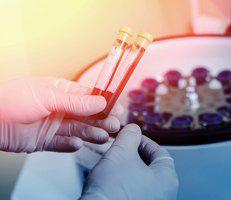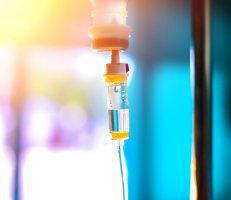- Renew Total Body Wellness Center
- Contents
- Saliva Testing
The Most Accurate Test
Saliva testing is the most accurate test to determine steroid hormones (i.e. progesterone, estrogen, DHEA and testosterone) levels when attempting to determine who needs hormone replacement. Steroid hormones are fat soluble. This means that they dissolve in fat or oil and not water. Since oil and water do not mix, the body makes carrier proteins, called hormone binding globulins, that when attached to a fatty hormone will allow it to mix in water. This allows the fat soluble hormone to travel in the watery bloodstream.
Those steroid hormones attached or bound to carrier proteins in the blood are not active, only the unbound or free hormone molecules have the ability to cause the effect they were made to have on the body. If we look at the hormone as a piece of candy that your taste buds can recognize, then the candy wrapper is the carrier protein surrounding the active hormone and protects the candy or the message of the hormone while it is bound and circulating. If we measure the amount of hormone or candy in the blood over 99% is wrapped, or bound as we refer to in scientific language. Your blood stream is your largest hormone reservoir in your body, but the hormones are inactive.
Once hormones are absorbed from your blood stream into your tissue, they lose their carrier protein and become active. Your salivary glands contain the same concentration of active hormones as your tissues contain. If we measure the amount of hormone in the saliva we measure how much is unwrapped or active and able to deliver the flavor or the message of the hormone to the breast, uterus, ovaries, brain, and other organs of the body. There are a number of factors that determine how much hormone, especially estrogen, is unwrapped and active in the body. Increased weight, diabetes, stress, low fiber/high fat diets can all increase the amount of estrogen that is active. If too much is active, you will produce symptoms associated with too much estrogen from the list below.
The total amount of estrogen in the blood can be high, normal, or low. Exercise, maintaining your ideal body weight, high fiber diets, eating the proper fats, eliminating stress, avoiding external estrogen can all decrease the amount of active estrogen in the body. Because there are so many variables it is impossible to know what the level of your individual hormones are without testing. This would be like looking at you and guessing what your blood sugar level is, or if your blood pressure is high, normal, or low. Since we would never treat your blood pressure or your blood sugar without first testing for your individual levels, I would not treat your hormone levels without first determining their levels so we can accurately balance them to normal levels.
Not only can saliva determine the amount of estrogen, it can also determine the active amounts of progesterone, DHEA, testosterone, and cortisol (your stress hormone) . All of these hormone levels may be altered by menopause, your weight, your age, your stress level, your diet, and multiple other factors. Further, there is interplay with other hormones in the body and affect each other so - thyroid affects sex hormones, stress hormones, and vice versa, so any change in one will cause a change in the other hormones, so this can become complex and is why you need someone that is specifically trained in hormone management, like Dr. Rohde.
Hormone replacement therapy is prescribed by many physicians without first utilizing an accurate test that confirms that the therapy is needed, and then to monitor the progress of the treatment! Millions of women have been placed on hormone replacement therapy despite significant short and long term side effects. I think that this is wrong, and can also be dangerous to your health as hormones have both positive and negative effects on the body, and too much of a hormone, or an imbalance of hormones can lead to bad outcomes such as cancers of the breast, prostate, uterus, and others. This was proven to be dangerous for women by the Women’s Health Initiative Study!
Saliva testing is available from several labs across the country and is easy for you to perform in the comfort of your own home and without the need for needles.
Most insurance companies will unfortunately not cover the cost of invaluable testing. but the pricing is reasonable and affordable, generally much less expensive than less accurate blood testing! The pricing will obviously vary depending on the type and number of tests needed to correctly assess your clinical situation and will be determined at your consultation visit.Saliva Reference Summary
For your convenience, a brief summary of published, scientific articles on saliva testing of hormones, particularly in reference to a comparison with blood serum testing, is provided below. These articles address a common misconception among health care providers that there is little research to support the efficacy of saliva testing for hormonal imbalance. The summaries also serve to illuminate the substantial volume of clinical and scientific research that has in fact been published on the topic.
In summary, saliva provides a convenient, stress-free, way to collect a diagnostic body fluid from which to determine, and then monitor, the free or bio-available fraction of steroid hormones circulating in the bloodstream and entering tissues. In addition, saliva testing is the only accurate way to measure levels of human bio-identical hormones delivered topically through the skin to manage hormone imbalances. As can be seen in each of the publications summarized below, the literature is clear that saliva and serum correlate extremely well.
Saliva Testing Support Documents
Note: summaries are listed in alphabetical order and categorized according to hormone. Clicking on the hypertext at the beginning of each summary provides linked access to the original journal abstract.
Aardal E, Holm AC. Cortisol in saliva-reference ranges and relation to cortisol in serum. Eur J Clin Chem Clin Biochem 1995;33:927-932.
Parallel serum and saliva samples were acquired in 197 individuals, in the morning and evening. A slight decrease in morning cortisol was seen in the oldest individuals tested (61-70 years). As has been demonstrated in other work, once serum cortisol exceeded » 450 nmol/l, a marked increase in salivary cortisol was noted. This is attributed to a rapid increase in free plasma cortisol once the available sites on cortisol binding globulin are filled. The authors conclude by enumerating the advantages of saliva over serum (simplicity, decreased stress, convenience, sample mail-in, temperature stability).
Aardal-Eriksson E, Karlberg BE, Holm AC. Salivary cortisol- and alternative to serum cortisol determinations in dynamic function tests. Clin Chem Lab Med 1998;36:215-222.
Serum and salivary cortisol responses were compared in various dynamic tests of HPA axis function including insulin tolerance, CRH stimulation, and ACTH challenge. In 42 of 45 tests performed, consideration of salivary cortisol led to the same conclusion as serum cortisol. The authors conclude that due to a more pronounced cortisol response in saliva, and a closer correlation between salivary cortisol and serum ACTH, salivary cortisol may be used as an alternative parameter in dynamic endocrine tests.
Allolio B, Hoffmann J, Linton EA, Winkelmann W, Kusche M, Schulte HM. Diurnal salivary cortisol patterns during pregnancy and after delivery: relationship to plasma corticotrophin-releasing hormone. Clin Endocrinol 1990;33:279-289.
The circadian rhythm of salivary cortisol levels was studied in 10 pregnant women every 4 weeks throughout pregnancy. In 12 women, diurnal variation of salivary cortisol, serum cortisol, plasma ACTH, plasma CRH and serum progesterone was examined late in the third trimester and again 3-5 days after delivery. Mean salivary cortisol levels increased throughout pregnancy, reaching levels almost twice that of controls by late pregnancy, and falling rapidly with delivery. There was no correlation between plasma CRH, plasma ACTH, serum and saliva cortisol in late pregnancy. The authors conclude that although CRH levels increase in late pregnancy (due to placental production), this CRH has very little effect on baseline adrenocortical function. Instead, they hypothesize that the high progesterone levels in late pregnancy induce a state of glucocorticoid resistance, due to the antiglucocorticoid effect of progesterone.
Barrou Z, Guiban D, Maroufi A, Fournier C, Dugue MA, Luton JP, Thomopoulos P. Overnight dexamethasone suppression test: comparison of plasma and salivary cortisol measurement for the screening of Cushing’s syndrome. Eur J Endocrin 1996;134:93-96.
Salivary cortisol was compared to plasma cortisol for screening of Cushing’s Syndrome via overnight dexamethasone suppression test. Compared to plasma, salivary cortisol demonstrated superior performance with 100% specificity and 94% sensitivity (no overlap between controls and patients with Cushing’s Syndrome). In addition, salivary cortisol levels in women taking oral contraceptives were normal whereas the corresponding plasma levels were elevated (false positive) in some cases.
Belkien LD, Bordt J, Moller P, Hano R, Nieschlag E. Estradiol in saliva for monitoring follicular stimulation in an in vitro fertilization program. Fertil Steril 1985;44:322.
Serial serum and saliva measurements were compared in 23 patients undergoing ovulation induction in an in vitro fertilization program. Serum and saliva were well correlated (r=0.77) throughout, except for salivary estradiol levels less than 4 pg/ml. (Note that estradiol can easily be detected below this level with modern methods.) The authors conclude that, “assessment of ovarian function in clomiphene citrate (CC) or CC/hMG stimulated cycles can be performed precisely with the saliva estradiol assay.”
Bolaji II, Tallon DF, O’Dwyer E, Fottrell PF. Assessment of bioavailability of oral micronized progesterone using a salivary progesterone enzyme immunoassay. Gynecol Endocrinol 1993;7:101-110.
These authors looked at salivary progesterone levels in 40 postmenopausal women taking 100 mg oral micronized progesterone in cyclical fashion (23 days/month) for one year. These levels fell into the range observed in the luteal phases of a control group of 40 normally cycling women. Five patients had simultaneous serum and saliva levels of progesterone measured for 12 hours after ingestion of a 100 mg dose of progesterone. Levels in both cases followed the same time curve, with both peaking at 2 hours. This supports the notion that progesterone diffuses rapidly from serum to saliva.
What we offer
Services
LOCATION
- Renew Total Body Wellness Center
- 3798 E. Fulton Avenue
- Decatur, IL 62521
- Phone: 217-864-2700
- Fax: 217-422-0004
OFFICE HOURS
- Monday 8:00 am - 5:30 pm
- Tuesday 8:00 am - 5:30 pm
- Wednesday 8:00 am - 5:30 pm
- Thursday 8:00 am - 5:30 pm
- Friday 8:00 am - 12:00 pm
- Saturday Closed
- Sunday Closed








